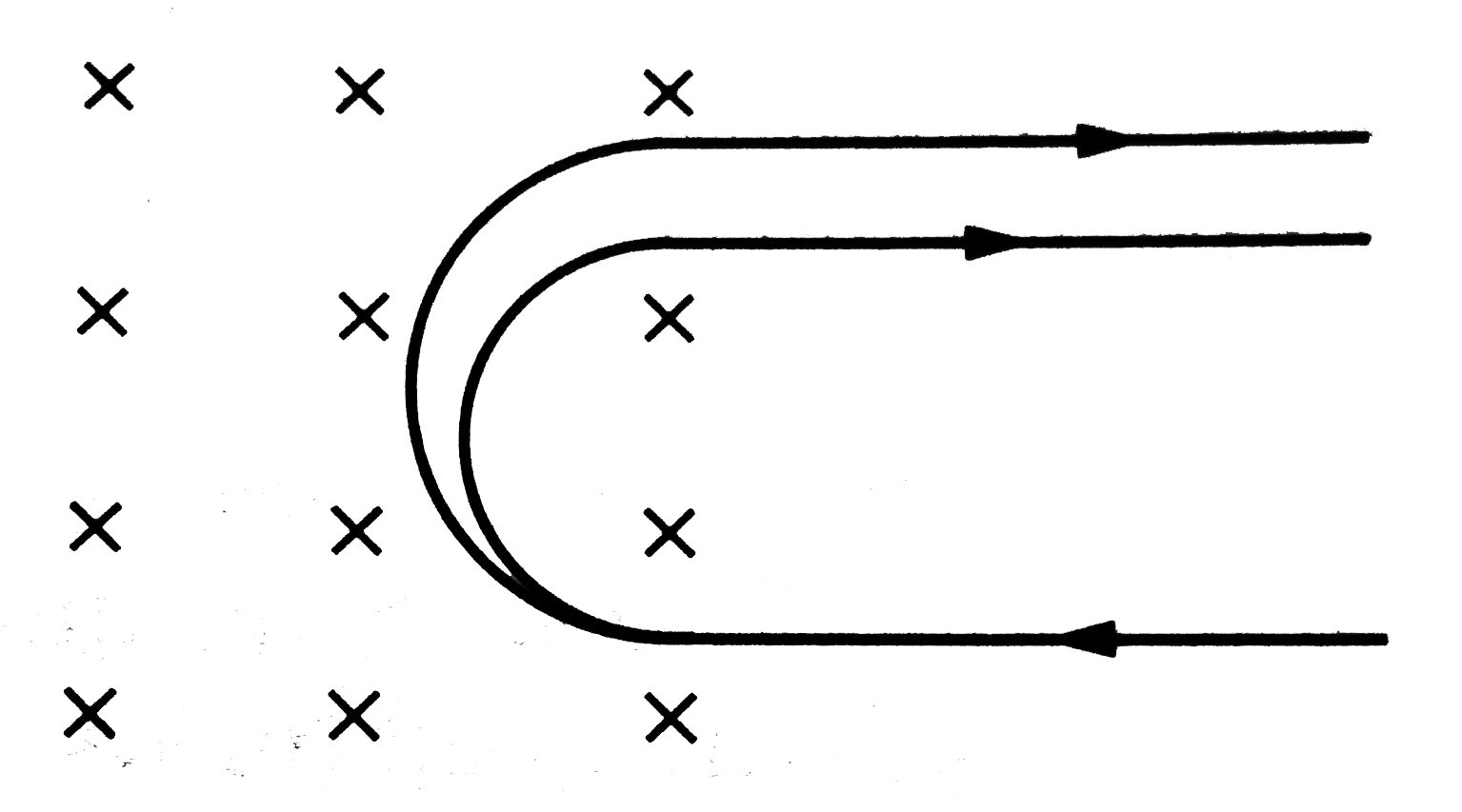Fe+ ions are accelerated through a potential difference of 500 V and are injected normally into a homogeneous magnetic field B of strength 20.0 m T. Find the radius of the circular paths followed by the isotopes with mass numbers 57 and 58. Take the mass of an ion=A(1.6X10−27) kg where A is the mass number.
1.1×106V/m
Topper's Solved these Questions
- MAGNETIC FORCEBOOK - RESNICK AND HALLIDAYCHAPTER - MAGNETIC FORCEEXERCISE - Practice Questions (Single correct Choice Type )
24 Videos
- MAGNETIC FORCEBOOK - RESNICK AND HALLIDAYCHAPTER - MAGNETIC FORCEEXERCISE - Practice Questions (More than one correct choice Type)
11 Videos
- MAGNETIC FORCEBOOK - RESNICK AND HALLIDAYCHAPTER - MAGNETIC FORCEEXERCISE - Check point
6 Videos
- MAGNETIC FIELDS DUE TO CURRENTSBOOK - RESNICK AND HALLIDAYCHAPTER - MAGNETIC FIELDS DUE TO CURRENTSEXERCISE - Practice Question (Integer Type)
4 Videos
- MOTION ALONG A STRAIGHT LINEBOOK - RESNICK AND HALLIDAYCHAPTER - MOTION ALONG A STRAIGHT LINEEXERCISE - PRACTICE QUESTIONS ( Integer Type )
3 Videos
Similar Questions
A charged particle is accelerated through a potential difference of 24kV and acquires a speed of 2×106m/s.It is then injected perpendicularly into a magnetic field of strength 0.2T.Find the radius of the circle described by it.
View SolutionA charged particle is accelerated through a potential difference of 12 kV and acquires a speed of 1.0X106ms−1. It is then injected perpendicular into a magnetic field of strength 0.2 T. find the radius of the circle described by it.
View Solution
Knowledge Check
An electron of mass 'm' is accelerated through a potential difference of V and then it enters a magnetic field of inductionB. Normal to the lines of force. Then the radius of the circular path is
A√2eVmB√2VmeB2C√2VmeBD√2Vme2BA particle of mass m carrying charge q is accelerated by a potential difference V. It enters perpendicularly in a region of uniform magnetic field B and executes circular arc of radius R, then qm equals
A2VB2R2BV2BRCVB2RDmVBR
An electron is accelerated through a PD of 100V and then enters a region where it is moving perpendiculasr to a magnetic fiedl B=0.2T. Find the radius of the circular path. Repeat this problem for a proton.
View SolutionIdentical charged particles are accelerated through the same potential difference, and then made to enter in a region of uniform magnetie field. If R1 and R2 , are the radii of a circular paths followed by particles then what will be the ratio of their masses.
View SolutionSingly charged magnesium (A=24) ions are accelerated to kinetic energy 2keV and are projected perpendicularly into a magnetic field B of magnitude 0.6 T. (a) Find the radius of the circle formed by the ions. (b) If there are also singly charged ions of the isotope magnesium.26, what would be the radius for these particles?
View SolutionA nerrow beam of singly charged potassium ions of kinetic energy 32keV is injected into a region of width 1.00 cm having a magnetic field of strenght 0.500 T as shown in . The ions are collected at a screen 95.5cm away from the field region. If the beam contains isotopes of atomic weights 39 and 41, find the separaton between the points where these isotopes strike the screen. Take the mass of a potassium ion=A(1.6X10−27 kg where A is the mass number.

View SolutionA narrow beam of singley charged carbon ions, moving at a constant velocity of 6.0X104ms−1, is sent perpendicularly in a rectangular region having uniform magnetic field B=0.5 T . It is found that two beams emerge from the field in the backward derection, the separations from the incident beam being 3.0 cm and 3.5cm. Identify the isotopes persent in the ion beam. Take the mass of an ion = A(1.6X10−27 kg, where A is the mass number.

View SolutionA charge particle of mass m and charge q entered into magnetic field B normally after accelerating by potential difference V. Calculate radius of its circular path.
View Solution
